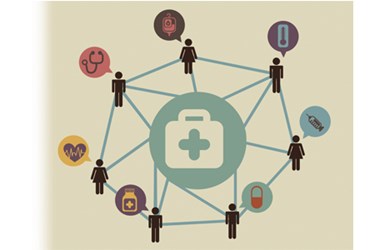AAFP Looks For Less Burden With Healthcare Solution Interoperability
By Megan Williams, contributing writer

The American Academy of Family Physicians (AAFP) is going to bat for its members and using commentary requested by the Office of the National Coordinator for Health IT (ONC) to push for less of a burden from interoperability on providers.
According to EHR Intelligence, the organization continues to prioritize health IT in relation to physician practice, and believes that interoperability is key in those efforts.
AAFP Letter
Still though, in response to the ONC’s plans to push interoperability, the AAFP issued a letter to National Coordinator Karen DeSalvo, MD, MPH, MSc, specifically to illustrate concerns and doubts it has around the agency’s three part plan to meet interoperability goals.
The AAFP specifically calls out three goals in the overarching ONC plan — “use,” “collect,” and “share.” AAFP Board Chair, Reid B. Blackwelder, MD, FAAFP, stated that the fact that the last two goals remain in the plan are an indication that the current version contains holdovers from the previous administration. The letter states, “The ‘use’ goals articulated in the strategic plan seem to be better suited for the Department of Health and Human Services (HHS) than for ONC. It would be important for the HHS strategic plan to mirror these goals, especially given the need to align financial incentives around appropriate care delivery. In reviewing the goals for “collect” and “share,” although they are appropriate goals and objectives, we believe they are indistinguishable from the goals and objectives of the prior decade. We are concerned that work has not been done to determine why these goals have not been achieved during the past ten or more years and how the tactics and activities of the next ten years will be different.”
Progress Ignored
The AAFP also highlighted concerns that existing progress has not been acknowledged. The letter continues, “The AAFP also is concerned that current successes are not acknowledged in the strategic plan. We have seen significant increase in provider adoption of health IT and we are beginning to see a robust network of secure, interoperable exchange via Direct, supported by a security and trust framework, accreditation programs, and trust anchor services established by DirectTrust under the Exemplar HIE Governance Program’s Cooperative Agreement with ONC.”
In spite of all of this, the AAFP has remained supportive, with an emphasis on reducing burdens on providers. It has also stayed focused on short-term goals (such as an interoperable HIE using the Direct standard) even as the ONC focuses on the next decade of interoperability.
